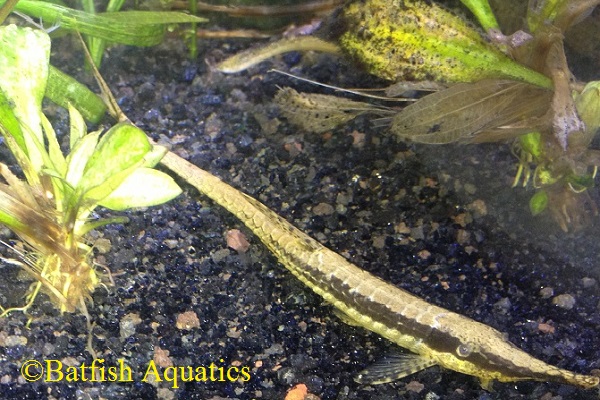|
It doesn't take a stretch of imagination to realise why this fish is called the twig catfish. Farlowella catfish mimic small sticks or twigs in their wild environment, and do an incredibly good job of camouflaging with the bottom leaf and wood litter. Against small piece of driftwood, these catfish can completely vanish.
Farlowella cats are great algae eaters, and unlike most of the more common Loricariid type catfishes, these catfish are at least partially active during the day, and can be observed grazing algae from the front glass at all times. Their camouflage tends to give them a bit more confidence than most other Loricariids, and they will boldly cling to the aquarium at all times, secure that no one knows they're not a stick! Despite their algae eating tendencies, they cannot subside on just what grows on the average aquarium glass alone (especially as they will generally not eat diatom algae, one of the most common aquarium algae). Their diet should include sinking vegetable matter, such as the New Era Pleco Pellets or similar algae based foods. Cooked zucchini and other fresh vegetables can also be included in their diet.
Though not schooling fish, solitary Farlowella tend to do very poorly, and Batfish Aquatics recommends you keep this fish in no less than a group of a half dozen individuals. Spawns in aquariums are common. Twig cats are not aggressive, and will not bother other fish at all. They should not be maintained with aggressive species. Farlowella make a great addition to a heavily planted aquarium, especially one with lots of driftwood!
Farlowella catfish do not handle large changes in water chemistry very well, and a stable, mature aquarium is necessary. Changes from our water to yours may often shock them and result in loss (as can moving them even between aquariums!). As such, acclimate these fish slowly, and drip acclimation is preferred.
Interestingly, recent research has shown that Farlowella acus is unlikely to be present in the aquarium hobby, and that most of the fish we see are actually Farlowella vittata.
|
